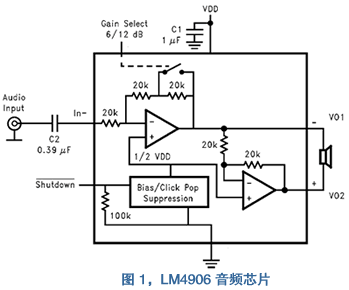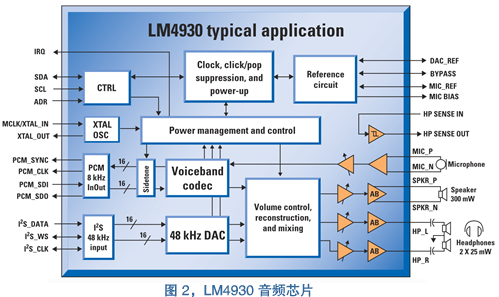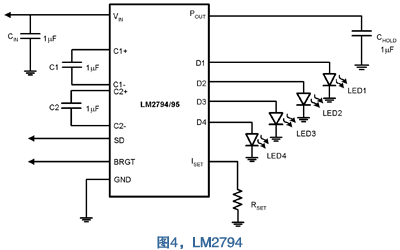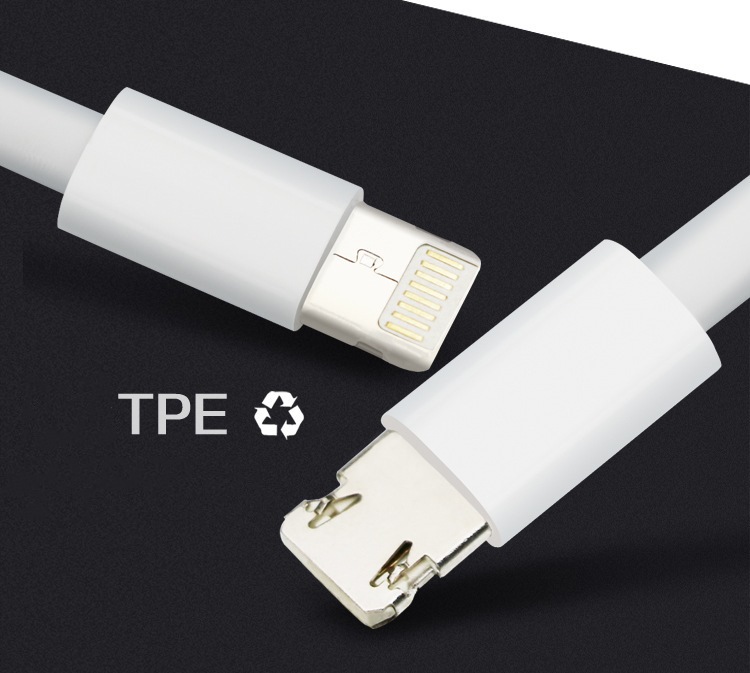The smart phone of the micro-technical revolution
Cellular mobile phones and smart phones have become part of our daily lives. The launch of these phones soon became very popular, and the speed was amazing. Since the advent of digital transmission technology, mobile phones have continued to evolve and their functions have been diversified. The magnitude of the change is not what we can imagine today.
This article refers to the address: http://
The booming mobile phone market has attracted many multinational companies. Even with the current economic downturn, the global sales of the mobile phone market is expected to reach 470 million units, making it the largest single consumer market to date.
With more and more communication channels, services have evolved from simple text messaging (SMS) to EMS, MMS, WAP, video streaming and other more advanced services, and mobile phones are constantly improving themselves to support these. service.
But mobile phones that can take advantage of these services are becoming increasingly cumbersome. Mobile phones must use more advanced and more sophisticated technologies to support the services provided by network operators. For example, mobile phones must add more hardware, enhance audio processing capabilities to handle different audio signals, and add more hardware to capture and display high-definition images. With the addition of more hardware, the battery needs to power these newly added peripheral modules, which has a certain impact on battery life. To meet these requirements, mobile phones cannot be light and thin.
These new features are the basic features unique to a new generation of smartphones. For the future development of the mobile phone market, manufacturers have their own set of views. High-end smartphones must have high communication capabilities and be able to support a wide range of high-end applications, while highly integrated low-end mobile phones must be cost-effective and mass-produced.
The following sections describe the different design orientations of high- and low-end mobile phones in detail, and further explain the design of audio, image processing and power management as an example to show why National Semiconductor has been able to provide the most suitable for mobile phone manufacturers. They need chip products.
Audio chip - using subsystem orientation

Older mobile phones basically have only two audio sources, which are voice and ringing from the voice channel.
National Semiconductor has been working to develop a variety of different chips for high-end and low-end telephony products to meet the needs of both markets.
In the mass consumer market, National Semiconductor has the latest product LM4906 developed for low-end phones. This chip is the latest model in the Boomero series, providing basic audio capabilities for standard mobile phones, and eliminates the need for bypass capacitors to save cost, reduce printed circuit board area, and ensure manufacturers can Bring products to market quickly. There are no more than three external components to be added, including speakers.
For a new generation of smart phones that need to support more advanced features, National Semiconductor has provided an audio subsystem specifically for this type of phone. National's LM4930 audio subsystem is a major step forward in terms of functionality to meet the needs of more I/O devices.
High-end smart phones using this chip generally use a structure in which communication and applications are separated from each other. For example, different processors are responsible for different tasks, and one of them is designated as the main processor, which is responsible for controlling other subsystems of the phone, for example, through I2C. A compatible bus controls the audio subsystem.

The input of the LM4930 chip (on the left) has two interfaces. One of them is the I2S input interface, which provides digital audio signals that are processed by the application processor and applied to the entire frequency range for MP3 playback, FM radio, and polyphonic ringing. The other interface is a two-way PCM interface to the communication engine that is dedicated to transmitting voice signals.
The output (on the right) has multiple outputs, including a Stereo Headphone output and a speaker-free speaker output, as well as a direct input for the microphone. Therefore, only one integrated circuit can support all the audio functions required for a cellular mobile phone.
The choice of the chip package chosen is the key to determining the success or failure of a mobile phone. Advanced packaging technologies, such as National Semiconductor's micro SMD package, ensure that the chip can perform more functions. The LM4930 chip shown in Figure 2 is packaged in this package, which is only 3.2mm x 3.4mm, but can hold up to 36 solder balls.
Image Processing
As the digital camera market continues to thrive, digital image processing technology is rapidly evolving with strong demand. The mobile phone with camera function seems to be a very rare product not long ago. The development of mobile phones in recent years can be said to be a long time. At first, the camera is only attached to the outside of the mobile phone. Now it has developed into a built-in mode, and even more and more high-end mobile phone products have adopted the camera as one of the necessary features.
The image processing module built into the mobile phone is composed of two parts: an image sensor and an image processor. Both parts have their own characteristics and requirements.

The image sensor can be a charge coupled device (CCD) or a complementary metal oxide semiconductor (CMOS) technology. But for mobile phones, CMOS technology is superior to CCD. For example, CMOS technology has lower supply voltage and power consumption, and technology integration is also higher. The following is a detailed discussion of this issue using CMOS technology as an example.
The CMOS sensor is responsible for capturing images by converting the light projected onto a column of photodiodes into electrical signals that are then sent to the image processor, which first corrects the signals and then converts them to formatted data for Used by other subsystems of the phone. The block diagram of the typical image processor subsystem is shown in the block diagram. The functions performed by this function block include lens shading correction, poor pixel correction, color interpolation correction, gamma line correction, color space conversion, saturation adjustment, and visual effects processing. The signal is processed as above and finally output in a confirmed format such as YUV 4:2:2.
Power management
With the image processing function, the functions of the mobile phone are more diversified, and more life is added to the user. But to ensure that the phone will retain the user's unforgettable experience forever, the battery must be able to cope with the additional power requirements of these new services and new features.
In fact, the use of the phone has been changing. For example, the phone was originally only used to transmit voice. After we finish the call, the phone will be in a low-power state until it needs to answer another call or make another call, and the low-power state will change. Features such as SMS and EMS have revolutionized the use of the phone. In order to transmit information such as SMS and EMS, the telephone user must keep the phone in operation for a long time in order to input a text message. According to the current situation, we will continue to use the phone to make long conversations or transmit information. It can be seen that the power consumption will continue to increase, and the battery of the phone will always be overloaded. Perhaps more importantly, the new features mentioned above far outweigh the power consumed by pure voice delivery.
At present, although the development of battery technology has been quite fast, it still cannot catch up with the new generation of phones with smaller appearance and more complete functions. The color display screen on the phone consumes a lot of power. It is a big challenge to extend the battery life of such mobile phones, especially the smaller the battery size.
Chip manufacturers like National Semiconductor have been working hard to provide a variety of power management chips for the market, ensuring that mobile phone batteries can fully utilize their energy efficiency and operational efficiency.
National Semiconductor has a range of outstanding power management products, including the LP398x and LP399x family of low-dropout regulator chips and the LM260x/1x series of DC/DC converter chips. When these regulator chips output 300mA, their typical voltage is only 120mV. Another feature of these chips is that if a battery-powered area/subsystem does not need to perform work in a certain mode of operation, the power to the area/subsystem is automatically turned off, and the typical shutdown current of the low-dropout chip. It will not exceed a few nanoamperes (nA).
Many mobile phones use color display screens, which is a very obvious trend. Ultra-twist (STN) or thin-film transistor (TFT) display technology relies on a white illuminator to provide a light source to ensure that the display performs its normal function. In addition, the interactive capabilities of mobile phones, the content of video games, and the transmission of video require greater clarity and color depth.
White LEDs are low cost and reliable illuminators. However, the LED must be driven by a current of the same size for uniform brightness. National's LM35xx series of switched-capacitor regulator chips and the LM27xx family of switch-inductor regulator chips offer system designers more options to design a suitable power supply system based on the structural requirements of the display screen.
Figure 4 shows a new generation of LED controllers such as the LM2794.

The telephone network structure and the mobile phone structure continue to introduce new technologies, and the driving force for supporting these new technologies to move forward is from mobile phone users. The higher the monthly average consumption of each mobile network user, the more support for the development of new technologies. . At present, network operators in the UK are offering three months of discounts to new users of their 3G network, allowing them to watch free clips of the British Super Football League for free. In addition, UK network operators' revenue from the sale of ringing tones has exceeded the revenue from the sale of images.
If the communication bandwidth of the mobile phone is further improved, the mobile phone can even send and receive more demanding multimedia content. Although compression technology has been improved with the widespread adoption of H.263 and MPEG4 Part 4 (AVC) specifications, this development has also made base station encoders more complex. The decoder of the handset receiver is also becoming more complex and the cost is increasing. This is their biggest headache for design engineers developing mobile phones and related components.
After years of development, the old-style phone has gradually been replaced by smart phones, and the whole process of transformation can be said to be a revolution in technology. In the future, smart phones will continue to evolve with the progress of the times. But one thing is certain, that is, the functions of mobile phones will become increasingly diversified. Companies like National Semiconductor will play an important role in this development process, and will develop more mobile phones as the market develops. Multi-chip products that meet the latest requirements of mobile phones.
Usb Charger Cable advantage:
For iPhone Cable Charger High Quality Usb Data Line 2.1A Fast Charging USB Cable For Apple Charging Chord For phones Charger
100% Brand new and high quality.Feel smooth, tough and durable,Original quality cable for smart phone.Set bracket, lightning charging solid data line, copper wire specifications, charging 2 core *25*0.1, data 2 core *12*0.1 74 copper wire.

Usb Charger Cable,Usb Charging Cable,Usb Cable Charging Cable,Micro Usb Charger Cable
Dongguan City Leya Electronic Technology Co. Ltd , http://www.dgleya.com